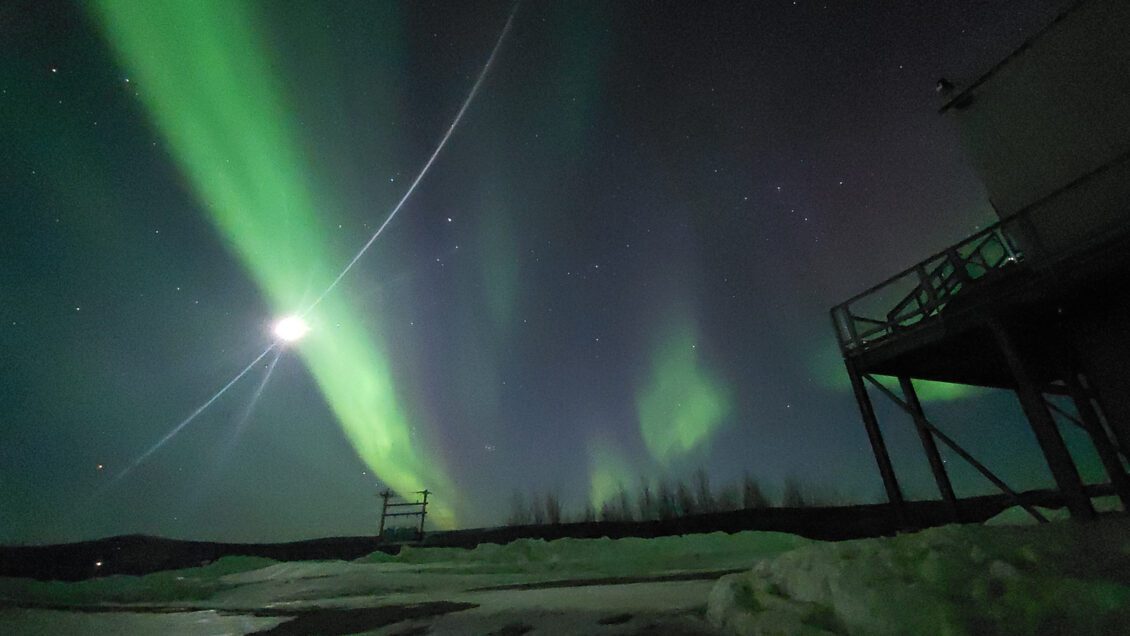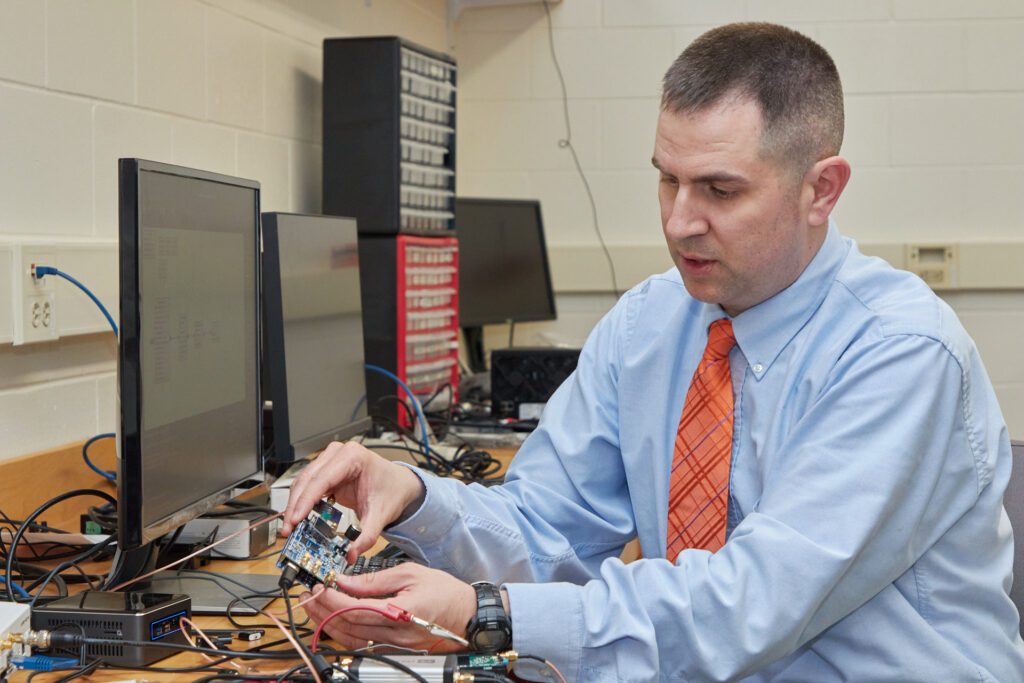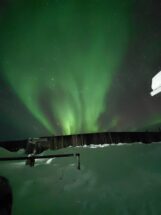
When you think of auroras — such as the famous aurora borealis, commonly referred to as the Northern Lights — your first thought probably isn’t skygazing over the Clemson University campus.
However, an assistant professor in the Clemson University College of Science has received a prestigious five-year National Science Foundation CAREER Grant to study the beautiful, ethereal light shows that grace the skies above Earth’s north and south poles.
Stephen Kaeppler, an assistant professor of physics and astronomy, will receive $721,601 for his research into observational and modeling investigations of pulsating aurora electrodynamics.
Auroras happen when charged particles from the Earth’s magnetic field collide with gases in the upper atmosphere. While there are a variety of distinct patterns seen in auroras, Kaeppler’s research is focused specifically on pulsating auroras.

Big electrical circuit
“One way to think about auroras is as one big electrical circuit,” Kaeppler explained. “You can envision that a current comes in, closes through the ionosphere and thermosphere, and goes back out into the magnetosphere. Energy dissipation occurs in the ionosphere.”
While the most common photographs of auroras usually showcase striking features such as bands and arcs of luminescent greens, blues and purples, pulsating auroras occur as frequently but have not been studied as much, Kaeppler said.
Kaeppler’s goal is to better understand how the pulsating auroras work.

“The discrete auroral arcs have gotten a lot more attention than the pulsating auroral arcs and their associated current structures, systems and electric fields, (which) have gotten very little attention,” he explained. “The purpose of the investigation is to bring more attention and focus to certain aspects of the pulsating auroras, and in particular to try to understand the interplay between currents, electric fields and conductivities.”
“One of the things that makes pulsating auroras interesting is that you’ve got this on/off modulation of the conductivities,” Kaeppler noted. “One of the questions is how does that change the overall electrodynamic configuration as opposed to the discreet arc, where you just have uniform visible light that appears and stays and just maybe moves around a little bit, as opposed to a system where it’s actually turning on and off, kind of like flipping a light switch. How are the currents responding to these changes?”
Part of the research will be performed utilizing the 3-D GEMINI (Geospace Environment Model of Ion-Neutral Interactions) ionosphere model to conduct simulations of both idealized pulsating aurora and actual auroral events.
In addition, Kaeppler said he will also “put a new spin on an old technique” by using high-frequency radio-wave observations to capture ionospheric and associated electrodynamical changes occurring during the pulsating aurora.
Conductivity
“One of the main aspects I’m trying to understand is how conductivity changes,” Kaeppler said. “It’s more about how particles are coming down — that’s what actually causes the light that you see — (and) how those on-and-off light pulsations then correspond to ionization changes and how those changes affect the electrical circuits.”
NSF CAREER grants comprise two distinct components: research and education. Kaeppler said the education component will encompass two broad parts.
“I’ve been running a program out of my lab, which has been primarily supported by the Clemson Creative Inquiry program, that teaches undergrad students the aerospace industry standard for how you basically propose a (space) mission and all the different review processes and steps that you go through,” he explained.
Rather than creating an actual space mission, however, Kaeppler’s students carry out their “missions” using smaller, model rockets. “They come up with their mission concept for what they’re going to do on this rocket, they’re given several sets of requirements, they then have to come up with a concept for what they’re going to fly,” he said.
After the students assemble their rockets and payloads, “then we have a day where we go launch them on a Saturday morning at a site that’s close to Greenville. That’s what I’m really excited about,” Kaeppler added.
Real payloads for future NASA missions
The other component will enable selected undergraduates to establish a NASA Rocksat-X program at Clemson. Those students will design and build a real payload that will be included in a future NASA space mission. “It’s not going up a thousand feet. It’s going up into space for a little bit of time and then coming back down,” he said.
Kaeppler is also working to give interested students the opportunity to participate in a weeklong summer program at the Pisgah Astronomical Research Institute in North Carolina “that will be primarily focused toward underrepresented students.”
“I would like to engage more underrepresented minorities and I hope to talk to some people here at Clemson about how to engage those students and make them aware of this,” Kaeppler said. “It’s an opportunity for them to learn about science and to help certain communities of people that have generally had a more difficult time” being involved with scientific exploration.
The program could even include international travel for the students, as Kaeppler is eyeing an upcoming rocket launch in Norway as a potential “field trip.”
One thing students won’t be able to do, Kaeppler admitted, is admire the aurora borealis in the sky over Tillman Hall. For eyes on the skies, Kaeppler will collaborate with the University of Alaska Fairbanks. With that one exception, however, Kaeppler said, “I really want to put Clemson University on the map for aerospace studies.”
Get in touch and we will connect you with the author or another expert.
Or email us at news@clemson.edu
